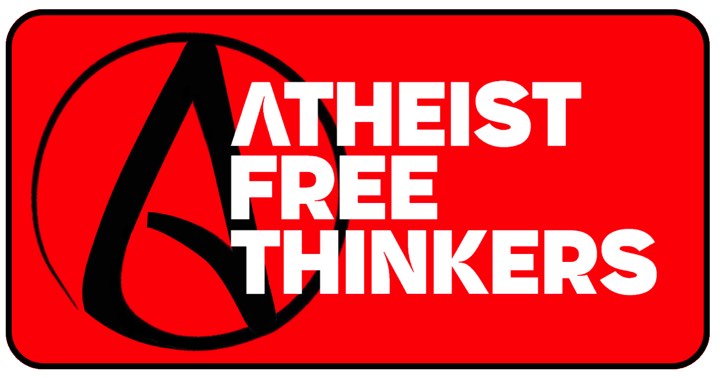Pierre Marchand
2021-12-16
Let us start by defining a few terms.
By republican secularism (laïcité républicaine), we mean the republican model of secularism established by the French Law of Separation of Churches and State of 1905:
Article 1 : “The Republic ensures freedom of conscience. It guarantees the free exercise of worship […]”
Article 2 : “The Republic does not recognize, pay or subsidize any religion. […]”
As for the word secularism, the on-line dictionary Wiktionary gives two definitions:
- Neutrality towards all religions.
- The political belief in the separation of church and state, i.e. the position that religious belief should not influence public and governmental decisions.
Thus, the first definition implies only that the State is neutral and does not favour any religion, whereas the second includes the religion-State separation principle, making it somewhat similar to republican secularism.
The term multiculturalism indicates cultural pluralism in which different ethnic groups collaborate and dialogue with each other without having to abandon their particular identities. All cultures are of equal value. This is cultural relativism.
In interculturalism, immigrants participate in all the activities of the host society. Successful cultural integration would require abandoning a part of the original culture that is not compatible with the values of the host society.
The term “communitarianism” (from the French communautarisme) designates any form of self-centrism of an ethnic and/or religious group that values its differences from the rest of society.
Each of these terms has legal and social implications that I will not discuss here.
In the French model, which presupposes the achievements of the Enlightenment, the person is first and foremost a citizen of the Republic, whatever his or her race, ethnicity or religion. Republican secularism is therefore based on respect for the rights of individuals. Religion is a choice and one is free to believe or disbelieve and to change one’s belief over the course of one’s life.
On the other hand, several countries have adopted multicultural secularism: the United Kingdom, Canada, Australia, India and several countries in Europe. (It should be emphasized that the expression “multicultural secularism” implies that the “secularism” involved includes only religious neutrality, without religion-State separation, because multiculturalism and religion-State separation are incompatible with each other. If the separation principle is included, then the expression “multicultural secularism” becomes an oxymoron.)
Multicultural secularism considers that each human being is defined by his or her culture, of which his/her religion is a part. Thus, it is often equivalent to religious multiculturalism or communitarianism.
Ideally, in the republican model, religions have no influence on the decisions of the State, whose objectives should be the common good, prosperity, the economy and science. This model holds that humans are capable of managing their own policies, economy and morals by reason alone, without appealing to the supernatural. The republican model is ultimately based on the achievements of Western civilization. Multiculturalism on the other hand, by defending the equality of all cultures, is often forced to renounce universal norms such as human rights, Western culture and, in short, the values of the Enlightenment.
So far, no country in the world fully follows the republican model. France is the one country that comes closest. It has experienced many irregularities (for example, some municipalities have funded mosques), it has considerable difficulty with immigration and has not been able to avoid communitarianism completely.
Despite statements by David Cameron, Nicolas Sarkozy and Angela Merkel that multiculturalism does not work, the rest of Europe is essentially multicultural except Poland which is ultra-Catholic, practically a theocracy, and others like Hungary who refuse all immigration.
In Asia, China is atheistic, but one can hardly speak of republican secularism in that country since it does not recognize human rights. The USSR was also atheistic, but today’s Russia has embraced Orthodox Christianity. India applies Anglo-Saxon multiculturalism but has to face an often violent communitarianism.
Canada and the United States are countries which have more or less adopted the Anglo-Saxon multicultural secularism model of the State. But even if it provides for State religious neutrality, in these two countries religions are influential and generally financed by tax exemptions and other tax benefits. Religions succeed in influencing State decisions in their favour and sometimes even impose their agenda.
Look at recent events in the USA on the issue of abortion. If states controlled by the Republican Party succeed in the Supreme Court, they will then attack LGBT rights and same-sex marriage. This is how a religion which represents less than 20% of the population imposes its whims on 100% of the population. Even though 23% of residents say they have no religious affiliation in the USA, only a score of openly atheist members of Congress have been elected in that country’s history. Some states even still have laws prohibiting an unbeliever from holding office, although they have not been enforced since the Supreme Court declared them unconstitutional in 1961. Many Americans dream of having the country officially declared a Christian nation. As General Flynn said recently, “If we are going to have one nation under God, which we must, we have to have one religion.” The danger of a theocracy is therefore omnipresent in the USA.
Can we even speak of secularism in Canada when the preamble to the Canadian Charter of Rights and Freedoms asserts “the supremacy of God” while the monarch of Canada holds the title Defender of the Faith? And while MPs continue to recite a prayer before each session of parliament? Despite this, Canada considers itself a secular State and in 1988 it passed its Canadian Multiculturalism Act (which has since become a State “religion”). So in principle it is a secular multicultural State. Nonetheless, even though in Canada the number of people reporting no religious affiliation was 32% in 2019, religions continue to wield significant power. They try to influence legislation, such as the religious exception in the hate propaganda law and motion M-103 against “Islamophobia.” Stephen Harper even created an office of religious freedom in 2013 (fortunately it was shut down by the Liberals in 2016).
While Canada supports human rights when it comes to other countries, internally it encourages discrimination against white men in some federal policies. Sometimes it is enough to be a member of a visible minority (non-white) to be given priority in hiring or receiving grants. And these practices extend to universities which rely heavily on the federal government for their research funding. This is an unfortunate by-product of multiculturalism.
Quebec, for its part, took an important step towards secularism in 2007-2008 with the Bouchard-Taylor Commission on reasonable accommodation. The Commission recommended that civil servants in positions of authority, that is, police officers, prison guards, judges, as well as the president and vice-presidents of the National Assembly, refrain from wearing religious symbols. That recommendation was not extended to teachers or healthcare workers, however. The Commission also proposed to abandon prayer in city council meetings and to remove the crucifix from the National Assembly. It also offered a model of open secularism but without any real separation of Church and State. Finally, it proposed interculturalism as a project for Quebec society. Indeed, this model of integration is well suited to Quebec, whose culture is constantly under threat.
In 2017, Bill 62 on the religious neutrality of the State required that State services be given and received with the face uncovered. Due to the outrage of the rest of Canada, this ban was not enforced and the law does not advance any of the other recommendations of the Bouchard-Taylor Commission.
In 2019, Quebec adopted Bill 21 on State secularism which reinforced secularism by establishing it on four principles: separation between State and religions, religious neutrality of the State, equality of all citizens and freedom of conscience and religion. Bill 21 extended the ban on the wearing of religious symbols to all civil servants in positions of coercive authority, to schoolteachers and school principals. The law did not stipulate that the crucifix be removed from the Blue Room of the National Assembly, but the government withdrew it nevertheless, as a gesture of good faith. More indignation from the rest of Canada! Indeed, the ROC has difficulty admitting that a model of living together different from theirs—the Quebec model, similar to republican secularism—can coexist with theirs. Indignation also, from the two co-presidents of the Bouchard-Taylor Commission who claim that the law will accentuate the divisions between the majority and minorities and that it targets Muslim teachers.
However, Bill 21 still lacks an essential element of French secularism: “The Republic does not recognize, pay or subsidize any religion.” Quebec continues to fund private religious schools. One day we may get there, but we can expect even more screams of indignation!
Atheists want total State secularism and that religions be completely relegated to the private sphere. No State funding, no tax exemptions. Thus, we hope that, in the long run, religions will be weakened and that reason will eventually prevail over obscurantism.
Having said that, imagine where humanity would be now if all the money invested over millennia in churches, cathedrals, mosques, synagogues, temples and pagodas had been invested in schools and universities instead!


 AFT on Twitter
AFT on Twitter Amis et amies de Libres penseurs athées
Amis et amies de Libres penseurs athées Atheist Alliance International (AAI)
Atheist Alliance International (AAI) Atheist Census Canada
Atheist Census Canada Humanist Perspectives
Humanist Perspectives Libres penseurs athées
Libres penseurs athées LPA-AFT on Heylo
LPA-AFT on Heylo LPA-AFT Youtube Channel
LPA-AFT Youtube Channel Rassemblement pour la laïcité (RPL)
Rassemblement pour la laïcité (RPL)
Leave a Reply